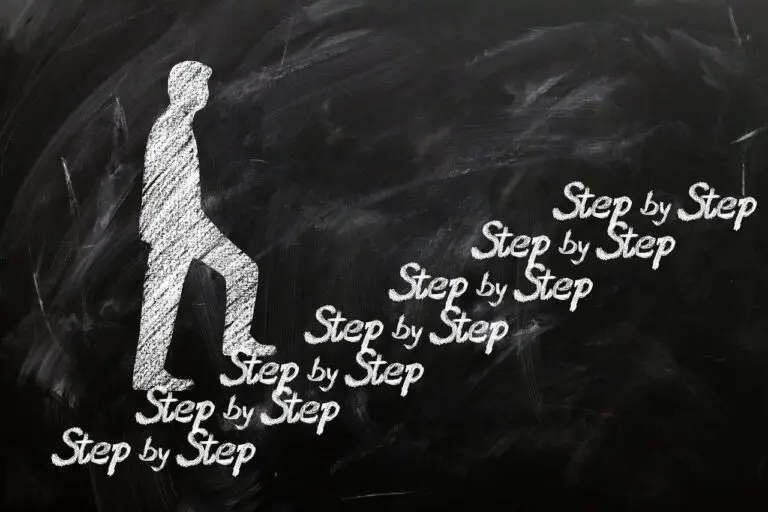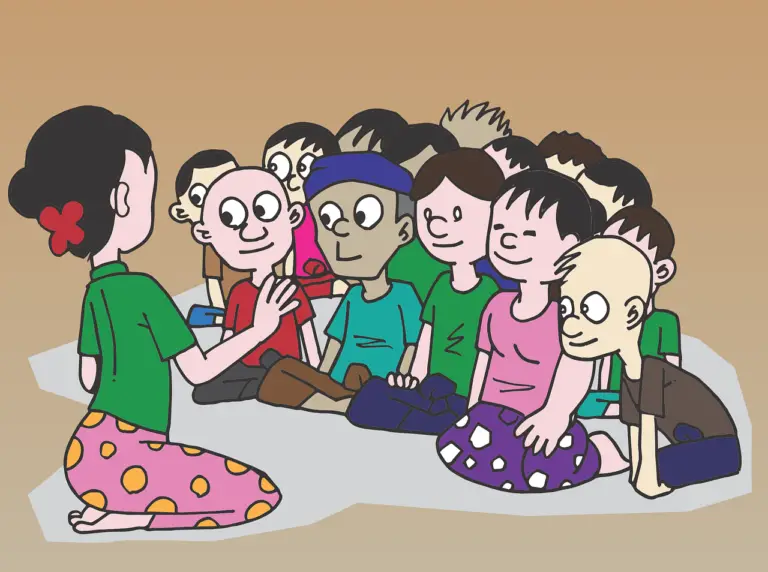An important part of becoming a TEFL teacher is knowing what type of job you want to do.

It can make the difference between enjoying your experience and hating it. Everyone is different. Some people love dynamic lessons with thirty five-year-olds while others would much rather sit down with an individual adult and have a sophisticated conversation.
You probably already lean one way or another. But before you accept any positions, make sure you fully understand what you’re getting into.
Becoming a TEFL teacher can seem daunting. This article is one part of a series I’ve written on starting out in the industry, talking about what qualifications you need, which countries to choose, and if the career is right for you. Read the overall guide here: Big Guide to Starting Out in TEFL: All you need to know
I’ve organised TEFL jobs based on three different aspects: age of students, intent of class (e.g. conversation, business, etc.) and where lessons take place (public schools, private classes, etc.).
We’ll look at each aspect in turn.
Student age reflects energy of the class
There are four rough age categories for TEFL classes. They are: very young children (0-6), children (6-12), teens/young adults (12-18), and adults (18+).
I’ve found there’s a fair amount of overlap between these groups as children develop at different rates. Some 10-year-olds fit better into the young adults category, and people in their mid-twenties still don’t have an adult’s maturity.
Very young children (0-6)
Kids in pre-school or nursery are still struggling to speak their first language, let alone a second one. Writing and grammar exercises are pointless. You need to be kind and warm, with lots of singing, dancing, physical interaction, and repetition.
The benefits are that you can have a powerful impact at an early age, and you don’t have to teach demanding vocab or complex grammar. The demands are lower. On the other hand, there’s a lot of childcare and mummying. Little kids are cute, but they have little control over their bodily functions.
Children (6-12)
Before puberty hits, children have endless energy. They’re at a stage of exploring new ideas, rapidly improving their language, and developing vital social skills. While you may try grammar and writing exercises, kids at this stage in development much prefer to play and be silly.
What I really like about this age is the positivity and enthusiasm they bring. As they grow in confidence, they start to enjoy speaking English, but unfortunately, they often struggle to control their emotions. High energy classes can be difficult to manage.
If you’re looking for fun games and activities, check out my list of 9 High Energy EFL/ESL Games for Boosting Vocabulary.
Teenagers/young adults (12-18)
A lot of people are reluctant to teach teenagers. And I can understand why. A class of thirty moody middle-schoolers is a tough thing to face. But don’t assume all teenagers are horrible.

In fact, people at this age have a lot of creativity and passion hidden under the surly exterior. If you can get them onside, they improve their English skills at speed while developing into socially adept adults. It’s really rewarding.
My favourite classes are private lessons with small groups of teenagers. Take them out of a big class environment and they don’t feel the need to act up. You can really engage them in something they care about.
Adults (18+)
When teaching adults, the vibe is usually quite serious. At this stage in life, they make their own decisions, so the most students want to be in your class. This makes them easier to work with.
Often they’ll prefer to do grammar and writing than play silly games. Others simply want conversation practice.
The benefits are, you don’t have to motivate them, and classes are more relaxed. Conversely, you may feel put off by having to teach complex grammar or prepare for exams with high stakes. Also, younger adults can be flaky. Without parents running their lives, they might not have the maturity to attend every class on time.
For more on what to expect with different types of students, read my article: What Are EFL/ESL Classes Like For Teachers?
Class intent dictates what you teach
While the intent of some classes is simply to “teach them English”, others may have specific goals.
These include conversation, business, exam preparation, or fun. Parents or school officials may want you to focus on grammar, while others will want dynamic teaching for their children.
Conversation classes
Conversation classes are often the easiest. You don’t need to prepare much, and the lesson is just people talking in English. They’re often with individual students. Adults and teenagers might not get many opportunities to practice speaking in their normal lives so they just want to chat.

However, just because they seem easy doesn’t mean you don’t have to work hard. There’s a skill in creating a comfortable atmosphere, making appropriate corrections, and keeping them engaged with interesting topics.
Business classes
You guessed it, these focus on business English. This includes learning how to write formal documents, talk with colleagues in meetings, and negotiate deals.
Only adults take this type of class. Students may be serious and driven, while other may be forced into the class by their employer, so it could be a mixed bag. Pay is often higher than other types of class.
Exam preparation
If you teach exam prep lessons, you’ll have plenty of potential students. Getting a certificate to prove your level of English opens countless doors to universities and employment, so the pressure is on.
While you can charge higher rates, you’ll have to put in the work to learn how their exam works, and prepare high quality sessions. I’ve done quite a lot of these, and the feeling when they pass is wonderful.
Worried whether TEFL teaching is too difficult? Check out my article Is TEFL Teaching Hard? A guide to whether TEFL is right for you to find out.
Dynamic classes
Dynamic English classes are exhausting, but great fun. These are often after-school clubs or language academy sessions, and most will be with children 12 or under.

Lots of games, shouting, running, and all-round excitement. That’s not to say you can’t have relaxed lessons – sometimes arts and crafts or mini-projects can be a welcome break from the chaos.
Standard lessons
Standard English classes are generally quite formal and prescriptive. Depending on your place of work (mostly public schools or language academies), you’ll have varying amounts of freedom to teach what you want.
Some schools have a rigid curriculum and a focus on grammar. Others might allow a bit more expression and creativity.
Free-reign classes
As long as you’re teaching English, these classes let you do whatever you want. At first, this can be a scary prospect. But when you realise the amazing activities and methods you can use, the sky’s the limit. They’re my favourite type of class, by far.
Unfortunately, they’re hard to come across. In most cases, they’ll be private classes in which the parents just want you to teach English to their kids – they don’t really care how you do it.
Not sure what to teach in a free-reign class? Read my post What Should You Teach EFL/ESL Students? to learn how to get started.
Class setting affects your work and lifestyle
There are four main settings for TEFL jobs: schools, language academies, private classes and businesses.
With each, there are benefits and disadvantages related to money, travel, and working hours.
I’m not including online classes in this list, as they’re a whole article on their own, and something I don’t have as much experience with.
Public and private schools
While the pay and student demographics may be different, being a class teacher in a public school is similar to in a private school.
You have a class, or a few classes, and you teach them for a full academic year. You have to manage children who might not want to be there, follow a curriculum, and do everything a normal teacher would do – mark homework, deal with behaviour problems, talk to parents, etc.

Hours are quite long. 40-hour weeks are common, and in many cases you’ll have to work even more to keep up with planning and marking. However, it’s a fixed job, and you get access to a lot of students for a significant amount of time. You can have a big impact on their lives.
In most countries, you’ll need a teaching license from home, although in some places, a CELTA or even TEFL certificate can be enough.
To find out which TEFL qualification you need, I have a full explanation of the different options right here: What is the Best TEFL Certificate? Guide to choosing right.
Language academies
It’s hard to say exactly what to expect at a language academy, as they’re all different.
A lot of international companies hire teachers and train them in a specific teaching style which is prescriptive and rigid. It means you don’t have to prepare much, but classes can be boring. Other academies throw you in at the deep end and have you design classes from the first day.
Class sizes range from 1 to 20, and the age of students can be anything from 5 to 85. There are also kindergarten schools which work in a similar way.

Working hours are usually less than in public/private schools, and you may have to travel between different locations and be flexible with what time of day you work.
For those getting into TEFL, it’s the most common choice. You get experience with a variety of classes, and you don’t need to have serious qualifications to get hired.
Business classes
Some companies employ in-house English teachers for their workers. These can be lucrative.
Your working conditions depend on the company in question, but in most cases, employment by one business won’t be a full-time job – you may get work in multiple companies, teaching a day or two per week in each.
Private classes
In most cases, being a full-time private tutor abroad isn’t possible due to work permit and visa laws. However, they can supplement your income.
I like the flexibility and freedom of private classes. You can choose what age students you want, and what type of classes you prefer to teach. You set the tone.
What’s more, you can create your own timetable to suit your lifestyle.
Pay is higher than other types of job, especially if you have lessons with small groups, but remember lesson planning, and travel arrangements are all your responsibility.
If you’re thinking of becoming a private TEFL tutor, I’ve written a whole step-by-step guide which covers all the different aspects. Head there to find out more: How to Get Started as an EFL/ESL Private Tutor.
Conclusion
Now you know what types of jobs are out there, you should have a better idea of what suits your personality and desires.
Whether you want to become a private tutor, a kindergarten leader, or an exam specialist, there are opportunities out there waiting for you.
Armed with this new knowledge, you can search for TEFL jobs in the TEFL destination you want to work and know exactly what you’re getting into.
To learn more about becoming a TEFL teacher, you should definitely read my other articles:
Big Guide to Starting Out in TEFL: All you need to know
Is TEFL Teaching Hard? A guide to whether TEFL is right for you
What Are EFL/ESL Classes Like For Teachers?
Is TEFL Legit? Guide to trustworthy certificates and jobs
Do You Need a Degree to Work as a TEFL Teacher?
How to Pick the Right TEFL Destination: 5 steps to success
What Type of TEFL Teaching is For You? Jobs explained
What is the Best TEFL Certificate? Guide to choosing right
TEFL vs. CELTA: What’s the difference? Which is best?
10 Steps to Passing Your TEFL: Study and assignment tips
Is There an Exam for TEFL Courses? What you need to pass
Which TEFL Course Provider to Choose? Why my pick is ITTT
Is it Hard to Get a TEFL Job? Tips on finding employment








